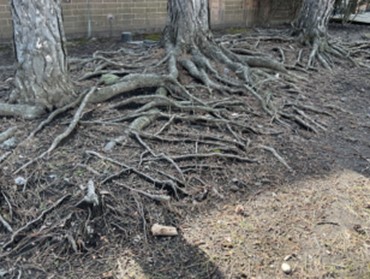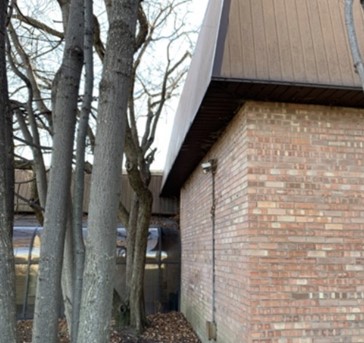Section 6.5.2 of the ComSOP titled Exterior states that the inspector should inspect the landscaping during a commercial property inspection. Contrarily, InterNACHI’s Home Inspection Standards of Practice exclude landscaping from a standard home inspection.
Landscaping
Landscaping refers to the process of making a piece of land more attractive by altering the existing design, such as by adding trees and shrubs. It also includes ongoing grounds or landscaping maintenance, such as lawn care, tree-trimming, waste management and clearing debris, weed control, etc. Properly assessing the landscaping can alert clients to potential health and safety hazards and other potentially costly repairs to the property and its systems.
Focus and Expectations
The ComSOP does not create an expectation that any inspection of the exterior grounds will rise to the level provided by a horticulturist, landscape architect, or arborist. Still, the commercial inspector should be able to identify whether an element of the landscaping is dead and in need of clearing, or in need of any attention. Additionally, maintenance or the lack thereof can affect the building aesthetically, as well as damage systems and create safety hazards, such as trips from roots upheaving a walkway.

Raised roots cause a trip hazard
Consider the following examples of reportable issues:
- trees or shrubs growing up against or over a building;
- leaves and other debris at the foundation’s edge, causing drainage issues;
- trees that shed excessive debris onto the roof, requiring more frequent maintenance (i.e., clogged drains or plant life growing on the roof);
- underground roots near utilities and sewer pipes, causing concern for potential root intrusion;
- underground roots damaging walkways, causing potential trip hazards; and
- other issues that can negatively impact the safety or functionality of other building systems.

Trees overhanging the roof
The ComSOP doesn’t set specific requirements for the landscaping portion of the inspection, and the inspector can create the scope for each project through agreement with the client and interviews of onsite personnel. For example, some properties could be expansive, with several acres of property beyond the footprint of the building. By contrast, other properties might have landscaping just a few feet wider than the building or located in raised beds. It would be difficult to assess the condition of a large property’s landscaping, while the inspector could easily inspect a small property whose landscapes is just a few steps beyond the building.
Note that an inspector is not required to inspect erosion-control or earth-stabilization measures, or geological, geotechnical, hydrological, or soil conditions.
A Landscaping Inspection Should Answer:
- Will this landscaping affect a building system?
- Is this landscaping damaging the building in any way?
- Will this landscaping provide a pedestrian hazard?
- Does this landscaping appear to be maintained?
- Does this landscaping appear to be alive?
- Is an expert needed to further evaluate it?
Conclusion
A commercial property inspection includes an assessment of the condition of the landscaping at a commercial building. The inspector should be able to identify deferred maintenance, and plants and elements that might be dead or compromised. This information will help clients assess future costs, defective systems, and safety issues.
Article Written By: Rob Claus, CMI®
Additional Resources for Commercial Property Inspectors:


